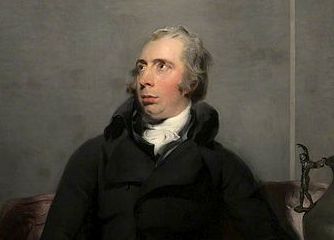
January 6, 2014, by Harry Cocks
What is the History of Sexuality Again?
People have been calling themselves “historians of sexuality” since the early 1990s, and there were plenty of others who dealt with questions of sex, desire and the body before that. How is it then, that we are still asking the question, ‘what is the history of sexuality?’
Perhaps one of the first writers to place sexual desire in historical and cultural context was Michel de Montaigne, who, in his essay “Of Custom” (1575) pointed out how various were the habits of different peoples and societies, using their marital and sexual practices as one of his key examples. Similarly, the eighteenth century collector of antiquities and historian of Roman priapic worship Richard Paine Knight (1751-1824, and painted here by Sir Thomas Lawrence), author of An Account of the Remains of The Worship of Priapus, (1786), concluded that the sexual habits of humanity were both somehow ingrained but also culturally specific. “Men, considered collectively”, he said, “are at all times the same animals, employing the same organs, and endowed with the same faculties.” However, he also conceded that history was an important influence, since their “passions, prejudices and conceptions” would be “directed to various ends, and modified in various ways, by the variety of external circumstances operating upon them.”
This question, of what the history of sexuality actually is, is dealt with partly in chapter by me in The Routledge History of Sex and the Body, edited by Kate Fisher and Sarah Toulalan of Exeter. I argue that the whole idea of “sexuality” as a discrete domain of knowledge is a modern invention that emerged gradually in the West from the eighteenth century onwards. Before then, discussions of sexual behaviour, desire and its relation to the body and mind were embedded in other discourses such as those relating to religion and sin, kinship, reproduction, astrology, marriage, patronage or friendship. There was no cultural category of “sexuality” separate from these matters and consequently “sexuality” alone was not used to organize personal identity, as it was later. This is partly why historians of sexuality find themselves so puzzled by their own discipline, as to discuss “sexuality” before the modern period (and often afterwards) requires you to explore the discourses and contexts in which writing about it was embedded. This problem means that histories of sexuality can often seem to be “about everything” and therefore to pose terrible practical problems for its practitioners. However, the modern historian is faced with one clear task at least, that is to show how and why our modern notion of “sexuality” (and the corresponding idea that it be used to distinguish people on the grounds of their desires or “sexual identities”) emerged and took hold. That is the history of sexuality (or a history of sexuality at least).
Harry Cocks, “Approaches to the History of Sexuality Since 1750”, in Kate Fisher and Sarah Toulalan, The Routledge History of Sex and the Body (Routledge, 2013)
http://www.routledge.com/books/details/9780415472371/
No comments yet, fill out a comment to be the first

Leave a Reply